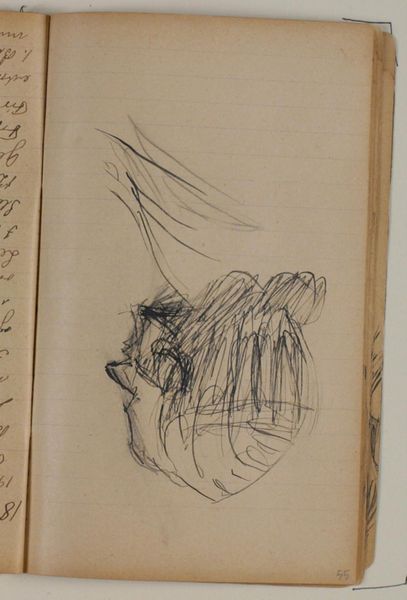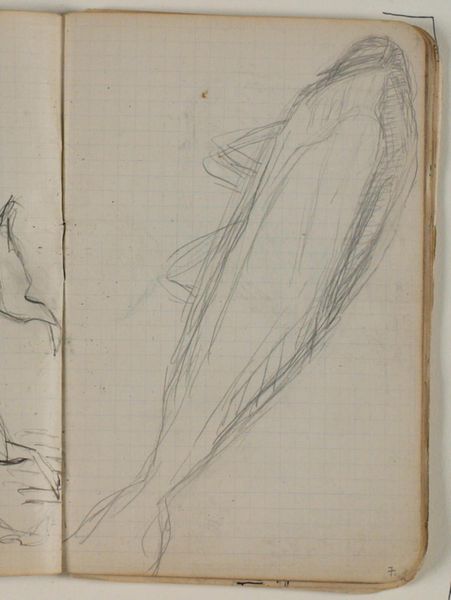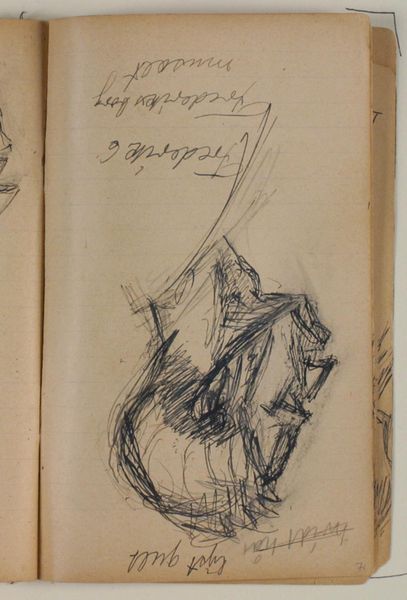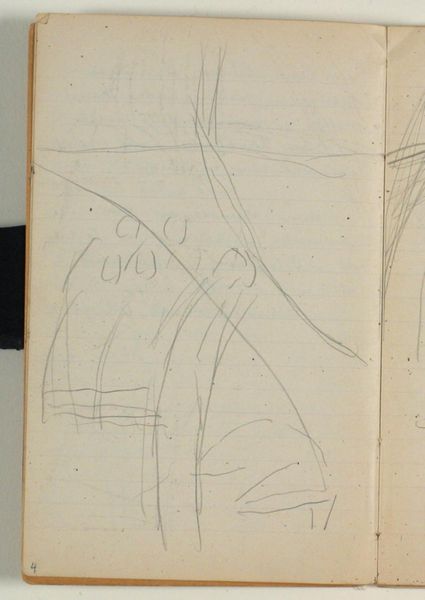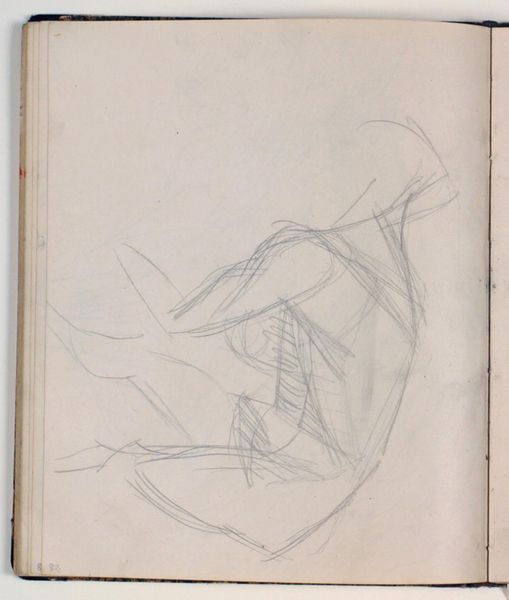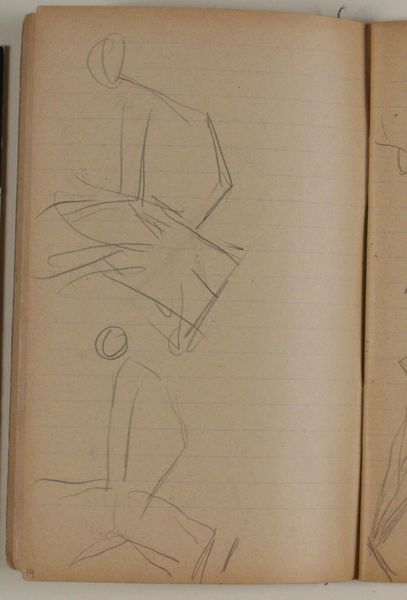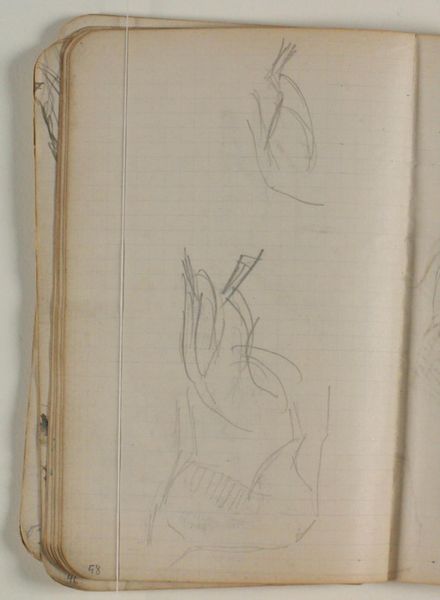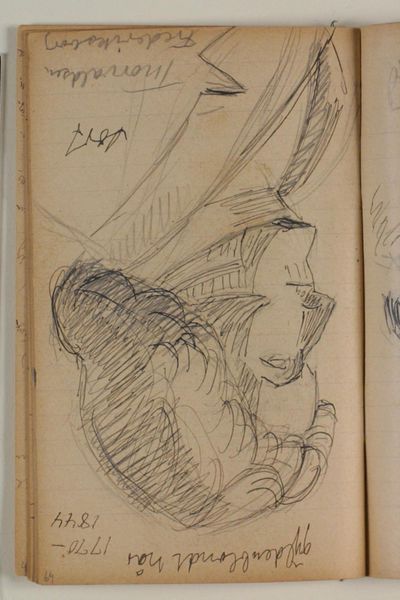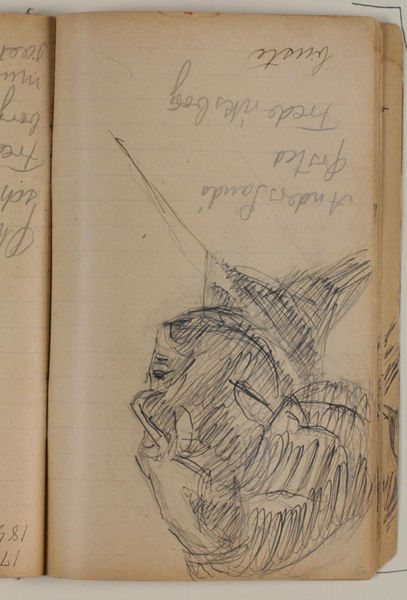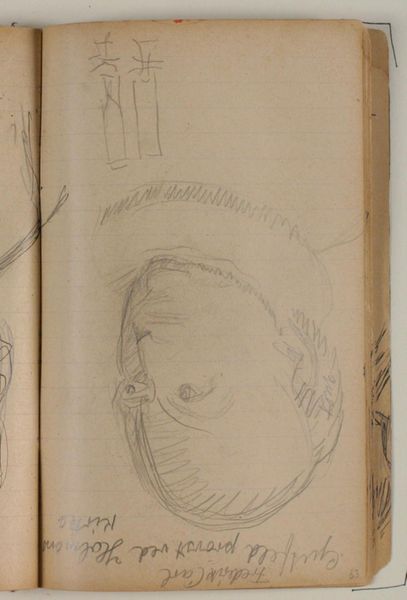
Studie efter August Saabyes H.C. Andersen-statue (1877) i Kongens Have, København 1930 - 1938
0:00
0:00
drawing, paper, pencil
#
portrait
#
drawing
#
paper
#
pencil
#
realism
Curator: We're looking at a sketch by Niels Larsen Stevns titled "Studie efter August Saabyes H.C. Andersen-statue (1877) i Kongens Have, København", rendered in pencil on paper sometime between 1930 and 1938. Editor: The energy is palpable. Look at the frenetic, almost violent scribbles creating form. Despite being a study, it possesses a raw expressiveness, especially around what I presume is the head of the figure. Curator: Indeed. The dynamism you observe speaks to Stevns' interest in capturing a likeness, but perhaps also something more profound about the Danish cultural figure that the sculpture memorializes. Remember, Hans Christian Andersen occupied a unique place in the national consciousness. Editor: The location in Kongens Have—the King’s Garden—is also relevant, situating art within a deliberately public space, democratizing it but also, simultaneously, endorsing certain officially-sanctioned expressions of Danish identity. The 1877 Saabye statue, meticulously replicated here, gains another layer of interpretation when filtered through the artist's hand in the 1930s. Curator: Precisely. The drawing is economical; look how the light dances. Stevns isolates form with these energetic, rhythmic strokes. The materiality is quite simple, and still evokes realism. It allows us to see the structural foundation. It presents a way of working to arrive at a coherent visual form. Editor: But does this direct approach, this sense of “working towards," reflect on Andersen’s enduring image and legacy itself? Here is a statue, already acting as a symbol of a writer celebrated in bronze for nearly fifty years. Is Stevns' redrawing in the 1930s another negotiation with that symbol and what Andersen, or the state's construction of Andersen, represents to Danish citizens during the interwar years? Curator: Possibly. We shouldn't disregard the fact that the rapid, almost frantic, quality also captures a temporal element, a brief encounter or a fleeting impression – unlike the presumed permanence of a bronze likeness of a famed writer, reproduced ad infinitum on postcards or even chocolate boxes. Editor: The multiple translations happening in this work, in medium, date, and location provide a context for what it represented across Danish culture and society. It encourages an open engagement about public monuments. Curator: Thank you. It reveals not just technique but also societal considerations and public roles associated with iconic statues in a specific public garden space. Editor: The interplay of light and shadow makes me think of art’s wider societal function, and I value what we’ve unpacked within this preliminary drawing in the cultural life.
Comments
No comments
Be the first to comment and join the conversation on the ultimate creative platform.
